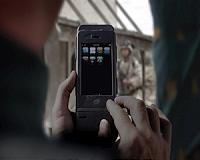| . |  |
. |
Abu Dhabi, United Arab Emirates (UPI) May 2, 2011 The United Arab Emirates has launched its fifth communications satellite, the first to provide secure and independent telecommunications for its armed forces as Persian Gulf Arab state boost their military capabilities against Iran. The Emirates spearhead efforts by the six-nation Gulf Cooperation Council to acquire its own military surveillance satellite system to bolster the early warning system they have been seeking to develop for several years. The next step is likely to be the launch of a military spy satellite, although there have been no definite indications that such a step is in the offing. The GCC states -- the others are Saudi Arabia, Kuwait, Oman, Qatar and Bahrain -- have been talking about a joint early warning system for a decade but, largely due to dynastic squabbles within the alliance established in 1982 at the height of the Iran-Iraq war, this and other GCC military aims remain unfulfilled. However, the growing tension between the GCC states and Iran could provide the spur to set aside their differences and work together to develop their common military capabilities and lessen their dependence on the United States for early warning. The Emirates' Y1A satellite was launched April 24 from the European Space Center in Kourou, French Guiana atop an Ariane 5 rocket. It was built by Yahsat, the Emirates' Al Yah Satellite Communication Co., a wholly owned subsidiary of the Mubadala Development Co., in Abu Dhabi, the oil-rich economic powerhouse of the seven-member federation. Mubadala, the government's investment arm, is heavily involved in the Emirates' drive to build up its defense industry. The satellite was developed and built by Astrium, the aerospace subsidiary of the European Aeronautics Defense and Space Co. and Thales Alenia Space in Cannes, France. That's owned by Thales Aerospace of France and Finmeccanica of Italy. The satellite, based on Astrium's highly successful Eurostar E3000 platform, had been scheduled for launch March 31 but that was delayed for technical reasons. A second satellite, Y1B, is scheduled for launch in the last quarter of the year to complete the $1.6 billion Yahsat program. Y1A and Y1B will also provide commercial communications across the Middle East, Africa, South West Asia and Europe. The development of the Emirates satellite has strategic implications for the Gulf Arab states. The Emirates Institution for Advanced Science and Technology runs the satellite program. The Emirates, a regional leader in the telecommunications sector, launched its first satellite, the 419-pound DubaiSat-1, July 29, 2001, from the Baikonur Cosmodrome in Kazakhstan, former center of the Soviet space program. The remote sensing satellite, carried in the nose cone of a Russian Dnepr rocket, was lofted into orbit 425 miles above the Earth and had an operating life of five years. DubaiSat-1 was built by a South Korean company, Satrec Initiative, aided by 16 Emirates engineers. DubaiSat-2, scheduled for launch in 2012, is being built at a new facility in the emirates. The United Arab Emirates has established itself as the space technology hub in the region and has had dealings with foreign companies that specialize in military satellites. In September 1997, Hughes Space and Communications International of the United States signed a $1 billion communications satellite deal, at that time the Arab world's largest satellite contract, with Abu Dhabi's Thuraya Satellite Telecommunications Organization, which groups investors in 14 Arab states. Thuraya has placed three communications into orbit. It's one of the biggest telecommunications companies in the Middle East. Its main shareholder is the state-run Emirates Telecommunications Co. That deal, Hughes' first in the Arab world, edged out Lockheed Martin and France's industrial giant Aerospatiale, ended the monopoly of the Middle East's satellite industry which had been held by Aerospatiale. The French company had launched the Arab world's five communications satellites operated by the Arab Space Telecommunications Corporation, known as Arabsat. Other international companies are also zeroing in on the Emirates to develop satellite business in the Persian Gulf. These include 4C Controls, a New Jersey satellite concern established by several French space industry executives. Among its executives is Philippe Aubrey, one of the architects of France's Helios military surveillance satellite.
Share This Article With Planet Earth
Related Links Read the latest in Military Space Communications Technology at SpaceWar.com
 Lockheed Martin Demonstrates Integration of MONAX Communications System with Air Force Base Network
Lockheed Martin Demonstrates Integration of MONAX Communications System with Air Force Base NetworkTinker AFB OK (SPX) Apr 25, 2011 Military commanders may soon have the ability to access the full range of smartphone applications anywhere on their installations with the Lockheed Martin (NYSE: LMT) MONAX 3G wireless communications system. Lockheed Martin recently demonstrated the ability to successfully integrate MONAX to the legacy voice and data communications deployable infrastructure with the 3rd Combat Communicatio ... read more |
|
| The content herein, unless otherwise known to be public domain, are Copyright 1995-2010 - SpaceDaily. AFP and UPI Wire Stories are copyright Agence France-Presse and United Press International. ESA Portal Reports are copyright European Space Agency. All NASA sourced material is public domain. Additional copyrights may apply in whole or part to other bona fide parties. Advertising does not imply endorsement,agreement or approval of any opinions, statements or information provided by SpaceDaily on any Web page published or hosted by SpaceDaily. Privacy Statement |